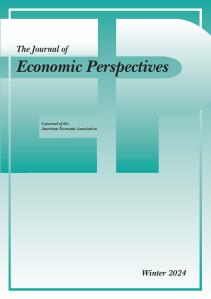Rishi Sunak has today said that he would remove the 5% VAT charged on household energy bills for 12 months from October if, as expected, the energy price cap for a typical consumer rises above £3,000.
Since energy prices for households are now essentially set directly by Ofgem via the price cap, this would feed through directly into household bills: there is no danger of firms’ failing to pass on the tax cut in full to consumers, as can sometimes happen.
The exact value of the tax cut to households, and cost to the exchequer, would depend on the exact level of energy bills. If Cornwall Insights’ latest forecast of the price cap (before removing VAT) at £3,244 is correct – and it remains at that level for the 12 months of the VAT suspension – it would save a typical consumer £154 over the year, and cost the exchequer about £4.3bn initially.
The savings for households would be straightforwardly proportional to their energy bills, reducing them by 5% – significant, but still small beer relative to the rise in average energy bills that we will have seen by October: a £3,244 price cap in October would be a 154% increase on the £1,277 price cap of a year earlier.
The tax cut would benefit poorer households most as a proportion of their budgets (since energy bills make up a larger share of their budgets), but it would benefit richer households most in cash terms (since they spend more on energy in cash terms) – in contrast to the one-off grants announced so far by the government to support households with the cost of living.
By providing more support to those who use more energy, removing VAT would be well targeted at those who face the biggest rise in their energy bills, but not at those – the poorest – who are least able to cope with the rise in costs.
While the policy would reduce energy prices directly, leaving more money in people’s pockets would encourage more spending on other items, slightly adding to inflationary pressures elsewhere.
Lower energy prices would encourage households to use slightly more electricity than they otherwise would. This would increase the electricity sector’s use of emissions permits under the UK’s emissions trading scheme (ETS) while the VAT suspension was in place, leaving fewer permits to be used in future and in other sectors covered by the ETS and increasing the price of ETS permits. As a result – unless the government decided to increase the number of ETS permits issued in future – costs for business and in aviation would increase slightly and households’ electricity bills would be slightly higher than otherwise after VAT was restored. This would partly offset the immediate effect of the tax cut on emissions; and the government would recoup part of the £4.3bn upfront cost of the tax cut in future via higher revenue from auctioning ETS permits.
If it were genuinely temporary, the fiscal and environmental costs of the policy would be bearable. The biggest risk with the policy is that it would prove politically difficult to restore VAT on energy bills at the end of the 12 months. As a permanent policy, removing VAT on energy bills would be a move in exactly the wrong direction: distorting households’ choices towards more energy use, making it harder to meet the UK’s ‘net zero’ targets and meaning that any reduction in emissions happened in a way that was more costly overall to households than it need be.
Stuart Adam, a Senior Economist at the IFS, said:
“If the energy price cap rises to the level currently forecast and stays there for a year, removing the 5% VAT component for 12 months would save a typical consumer £154 and cost the exchequer £4.3bn initially. By providing more support to those who use more energy, it would be well targeted at those who face the biggest rise in their energy bills, but not at those – the poorest – who are least able to cope with the rise in costs.
If it were genuinely temporary, the fiscal and environmental costs of the policy would be bearable. The biggest risk with the policy is that it would prove politically difficult to restore VAT on energy bills at the end of the 12 months. As a permanent policy, removing VAT on energy bills would be a move in exactly the wrong direction: distorting households’ choices towards more energy use, making it harder to meet the UK’s ‘net zero’ targets and meaning that any reduction in emissions happened in a way that was more costly overall to households than it need be.”









